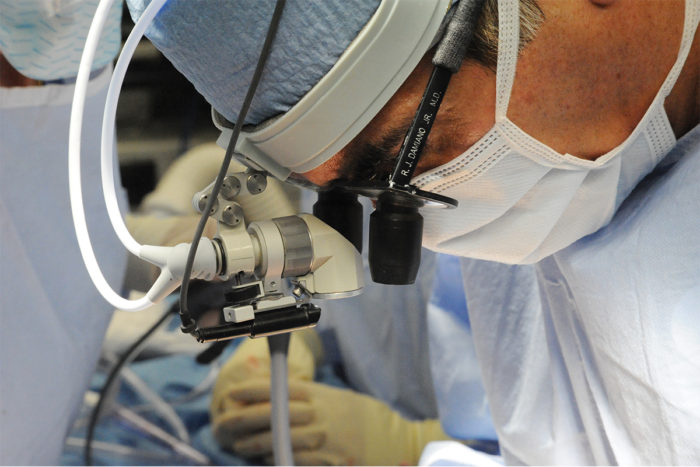Improving surgical treatments for atrial fibrillation
A new study is evaluating a procedure that corrects irregular heartbeats in patients

Chief of cardiac surgery, Ralph Damiano Jr., MD, helped refine and update treatments for atrial fibrillation, or an irregular heartbeat.
First developed at Washington University School of Medicine, the Cox-Maze procedure has become the gold standard for the surgical treatment of irregular heartbeats, called atrial fibrillation (AF). The most recent version, the Cox-Maze IV, uses bipolar radiofrequency energy to create conduction blocks of scar tissue, replacing most of the surgical incisions of the Cox-Maze III with linear lines of ablation, a procedure that applies scars to the heart’s surface to block signals causing the heart to misfire. Refined and updated by Washington University’s Ralph Damiano Jr., MD, chief of cardiac surgery at Barnes-Jewish Hospital, the Cox-Maze IV maintains the success rate of the Cox-Maze III and is easier and faster to perform.
CURE-AF study
Damiano and his colleagues reported 90 percent freedom from AF up to two years after patients underwent the Cox-Maze IV. Damiano and his Washington University colleagues were also key investigators and enrolled the most patients in the CURE-AF (Concomitant Utilization of Radiofrequency Energy for Atrial Fibrillation) study, which has registered 150 patients (75 with permanent AF and 75 with persistent AF) at 15 leading medical centers.
The ability to surgically treat complex AF is built upon understanding the biophysics of ablation energy sources and their behavior on atrial tissue. Since the first worldwide Maze procedure was performed at Barnes-Jewish Hospital by Washington University School of Medicine surgeons in 1987, more than 600 surgeries to treat atrial fibrillation have been performed, with two-thirds of these procedures in conjunction with another open-heart operation.






